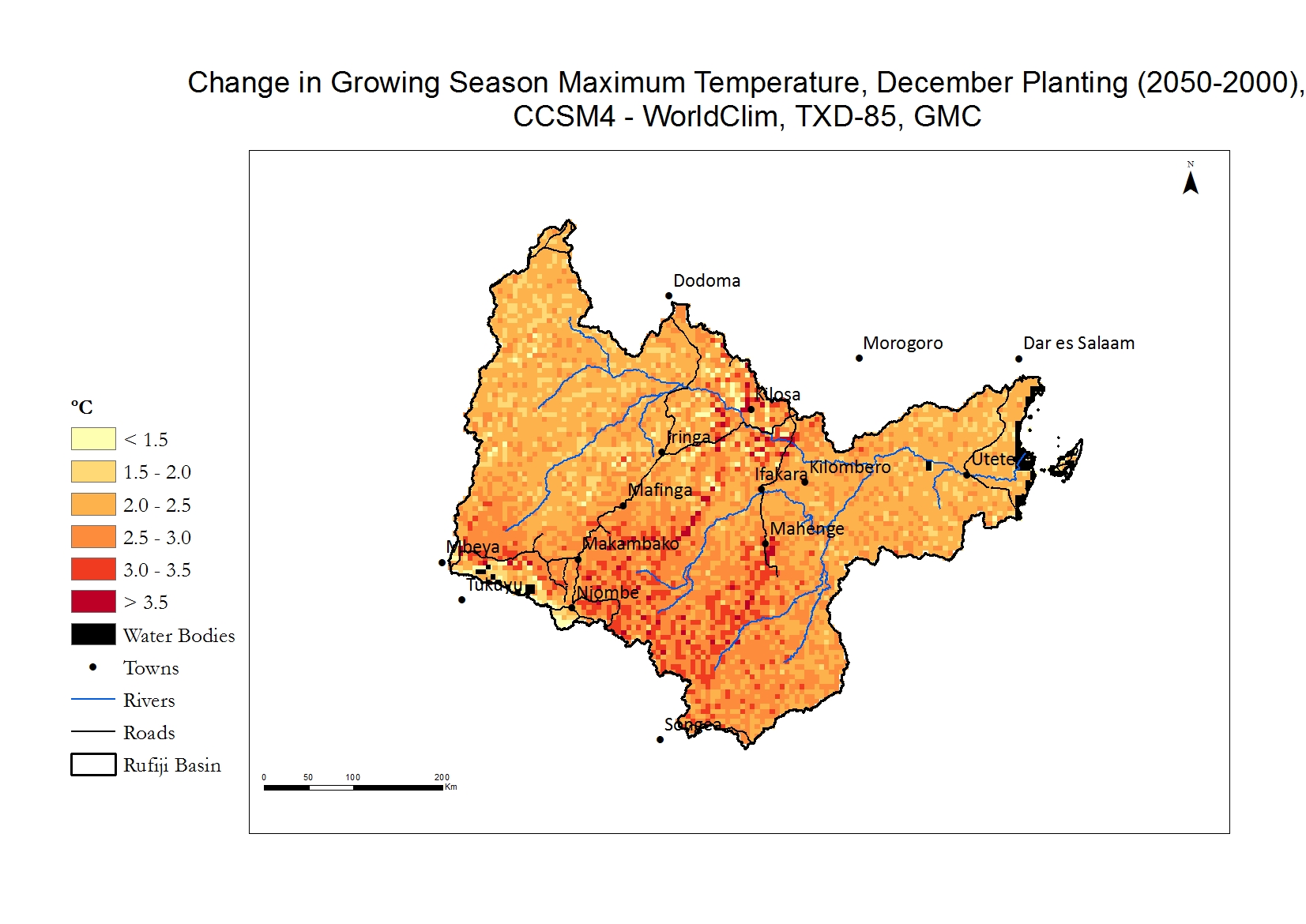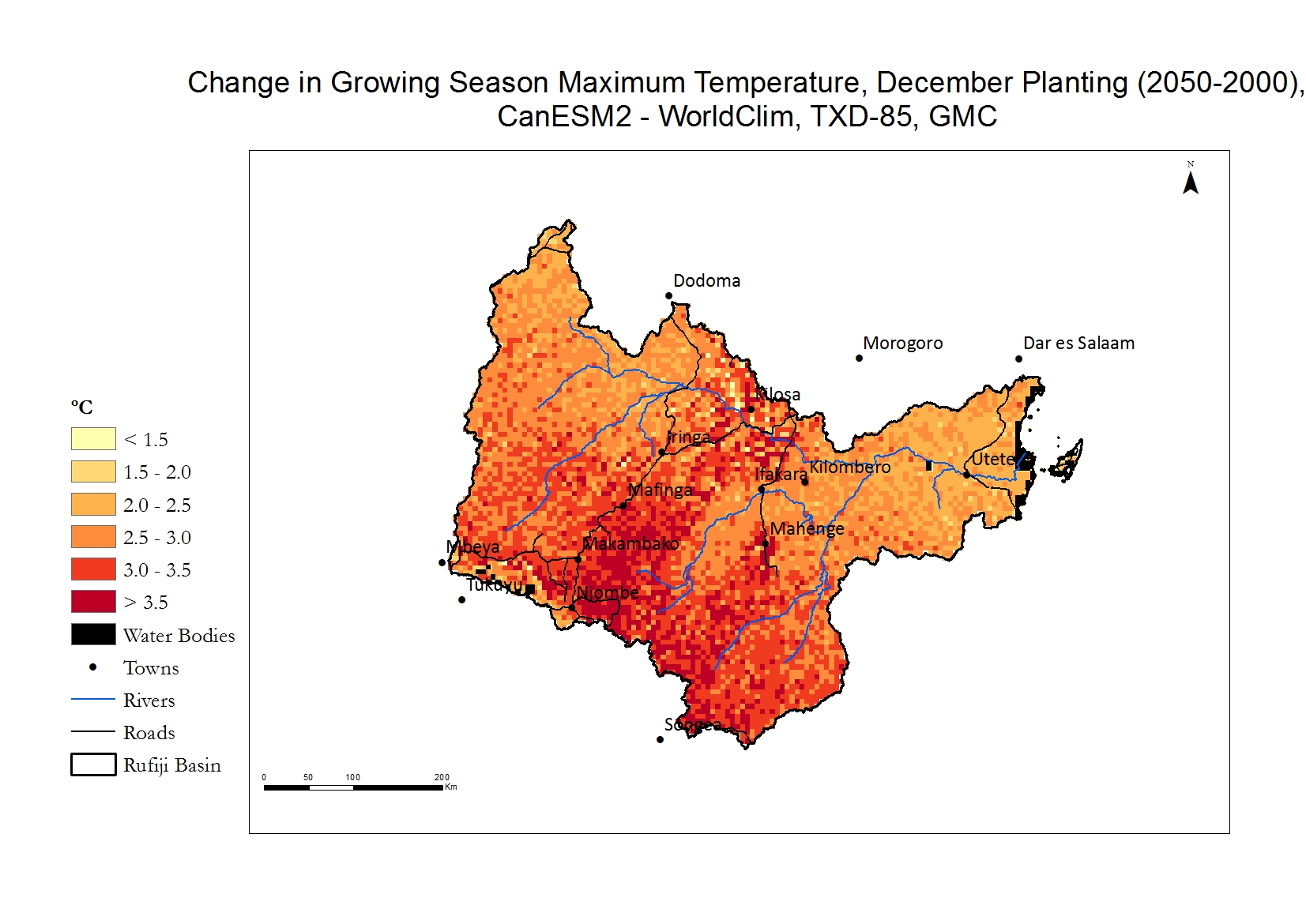Climate and Maximum Temperature
Introduction
The maximum temperature is the hottest temperature during the day. It is important for rice, maize and other crops because hot temperatures can restrict growth and yield.
Rice grows fastest at maximum temperatures of around 25° C., but growth slows if temperatures rise above 30° C. The plant is even more sensitive during the reproductive stage. Extreme heat events over 35°C for even a few hours can damage reproductive plant processes and lead to lower yields and, if lasting 10 days or more, cause complete sterility.
Maize does best under moderate temperatures and is vulnerable to warm temperatures. Ideal maximum temperatures are between 27 to 30°C. Temperatures above that, especially those above 35°C, lead to much lower productivity. Also, generally the warmer the temperature, the faster the plant completes its development (phenology). In warm temperatures such as in Tanzania, the more rapid phenology leads to lower yield as the plant matures rapidly before grains grow large, reducing yields.
Current Maximum Temperature
In the Rufiji Basin, the maximum temperatures range from relatively cool in the Highlands to very warm in the lowlands especially near the coast.

Future Maximum Temperature - 2050
Temperatures are steadily warming in the Rufiji Basin and are expected to continue to climb. Hot temperatures over 35°C are becoming more frequent and may become even more common in the future in the lowlands. Rice is increasingly susceptible to warmer and extreme temperatures. On the other hand, as higher elevation zones warm, they are expected to become more favorable for rice production.
For maize, extreme warm temperatures, over 35°C, are inhibitory at whatever stage of growth and yields fall off rapidly. Projected future temperature trends in the Rufiji Basin—more frequent hot days, warmer nighttime temperatures, and generally warmer temperatures—would thus negatively affect maize growth and reduce maize yields across the Basin except in the higher elevation zones. Warmer temperature also reduce the length of the growing season, or the number of days to to maturity, and thus depress grain development and yield.
Change in Maximum Temperature
The maps below indicate the change in the maximum temperature expected between around 2000 and 2050, in terms of number of degrees. The darker the color, the more change is expected.
Change in maximum temperatures is more generalized across the Basin compared to minimum temperatures, but in general, the Highlands are expected to warm faster than the lowlands. All four GCMs indicate that the night-time temperatures are expected to get much warmer, between 1.5° and 3.5° F warmer than currently. The MPI and CanESM2 models show more rapid warming than the other two models.
The already very warm east and southern area of the Basin is projected to get even warmer, with maximum temperatures averaging over 31°C in some places. These warmer temperatures would reduce the already short length of the growing season, lowering yield of both rice and maize. The maximum temperatures will more frequently reach the threshold where hot temperatures negatively affect the growth and the fertility especially of maize.
Comparison of Maximum Temperatures
These maps have a slider. When you move the large red dot left and right, you can compare the 2000 and the 2050 maximum temperatures. The enlargement of the warmest zones from 2000 to 2050 reflects how the area with potentially threatening hot temperatures for maize and rice will expand.
The 2000 map is labeled "WorldClim", which is the dataset representing current temperatures. The 2050 maps are labeled with the specific GCM names.
 Current
Current
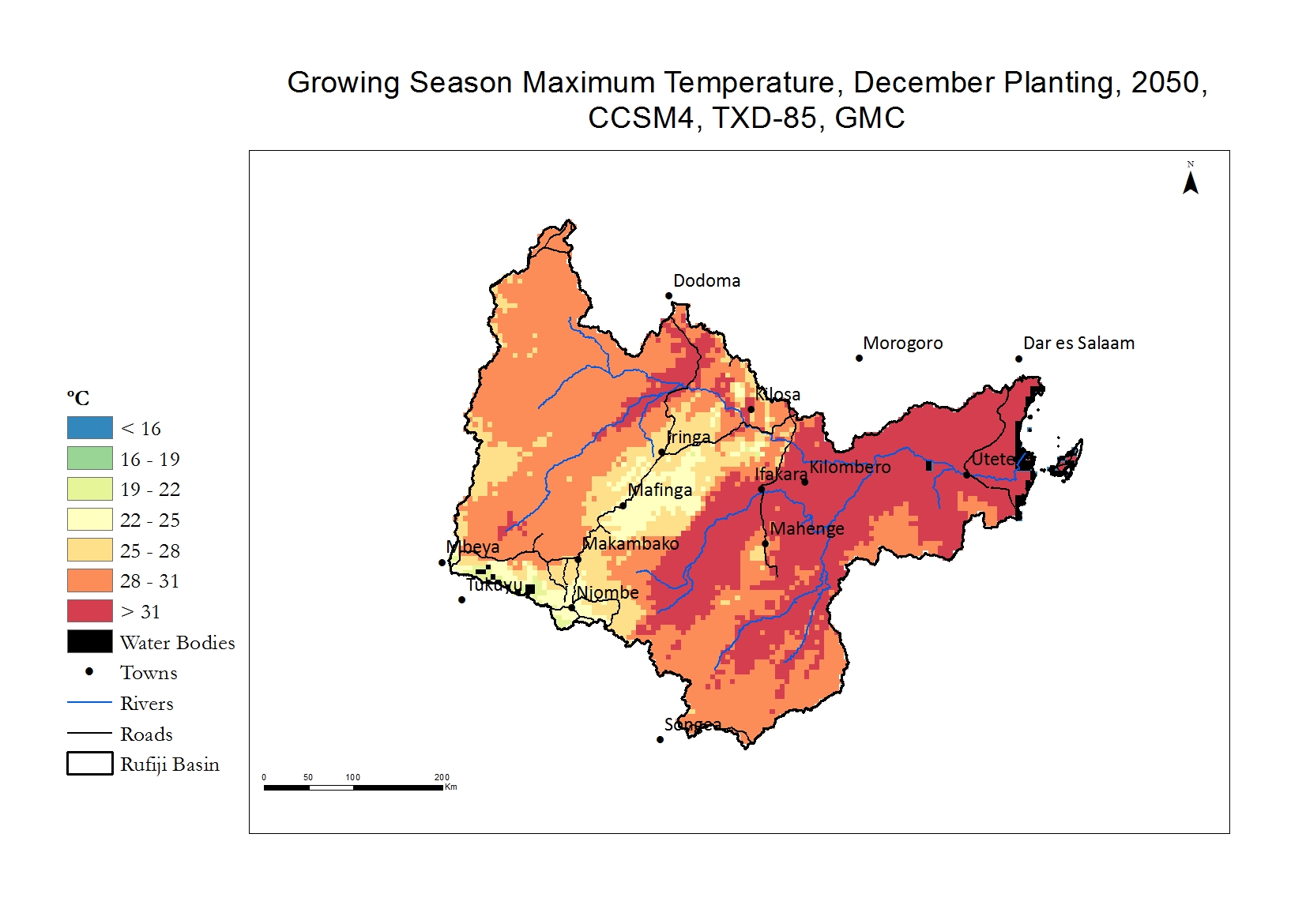
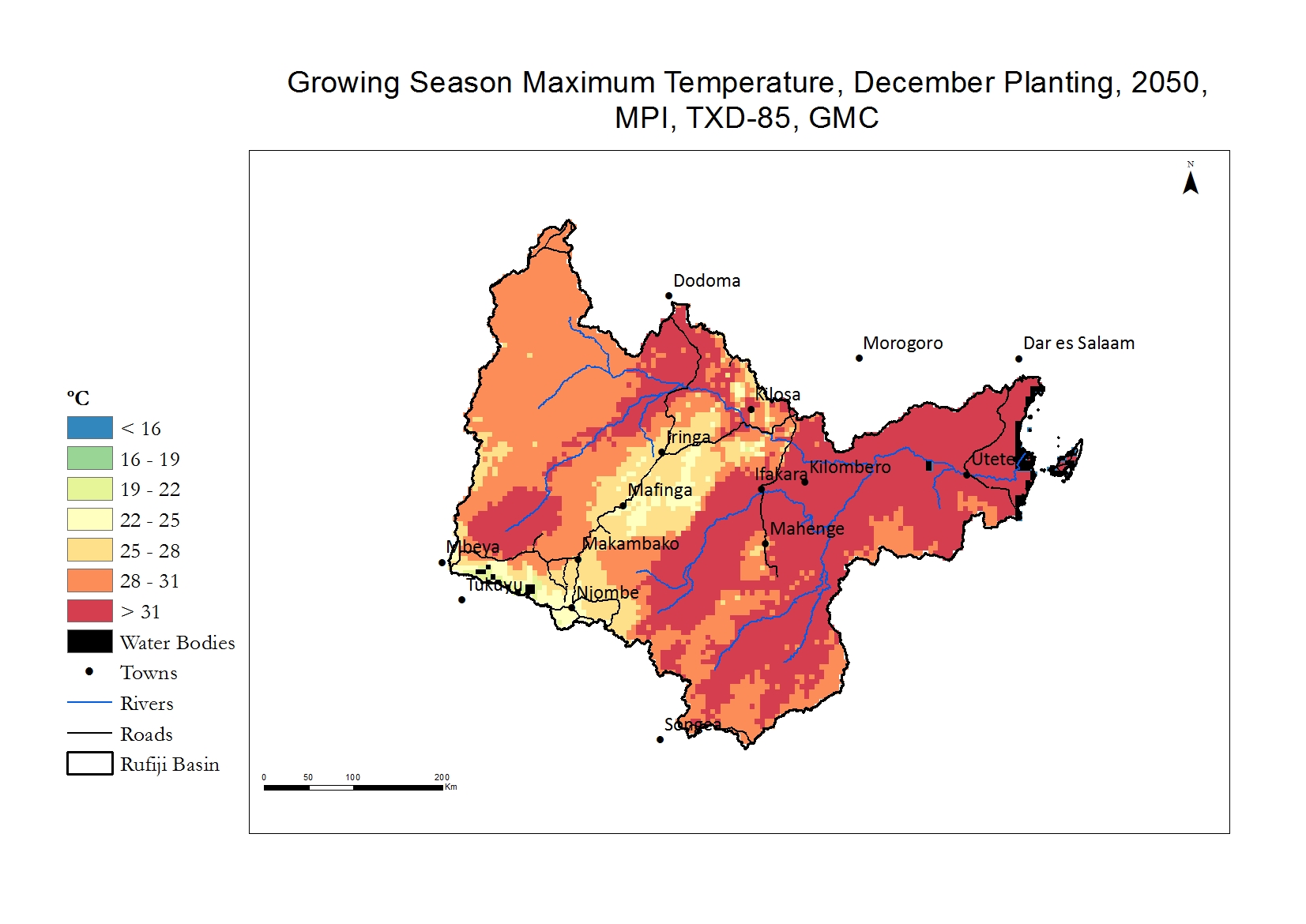
 Current
Current
 Current
Current
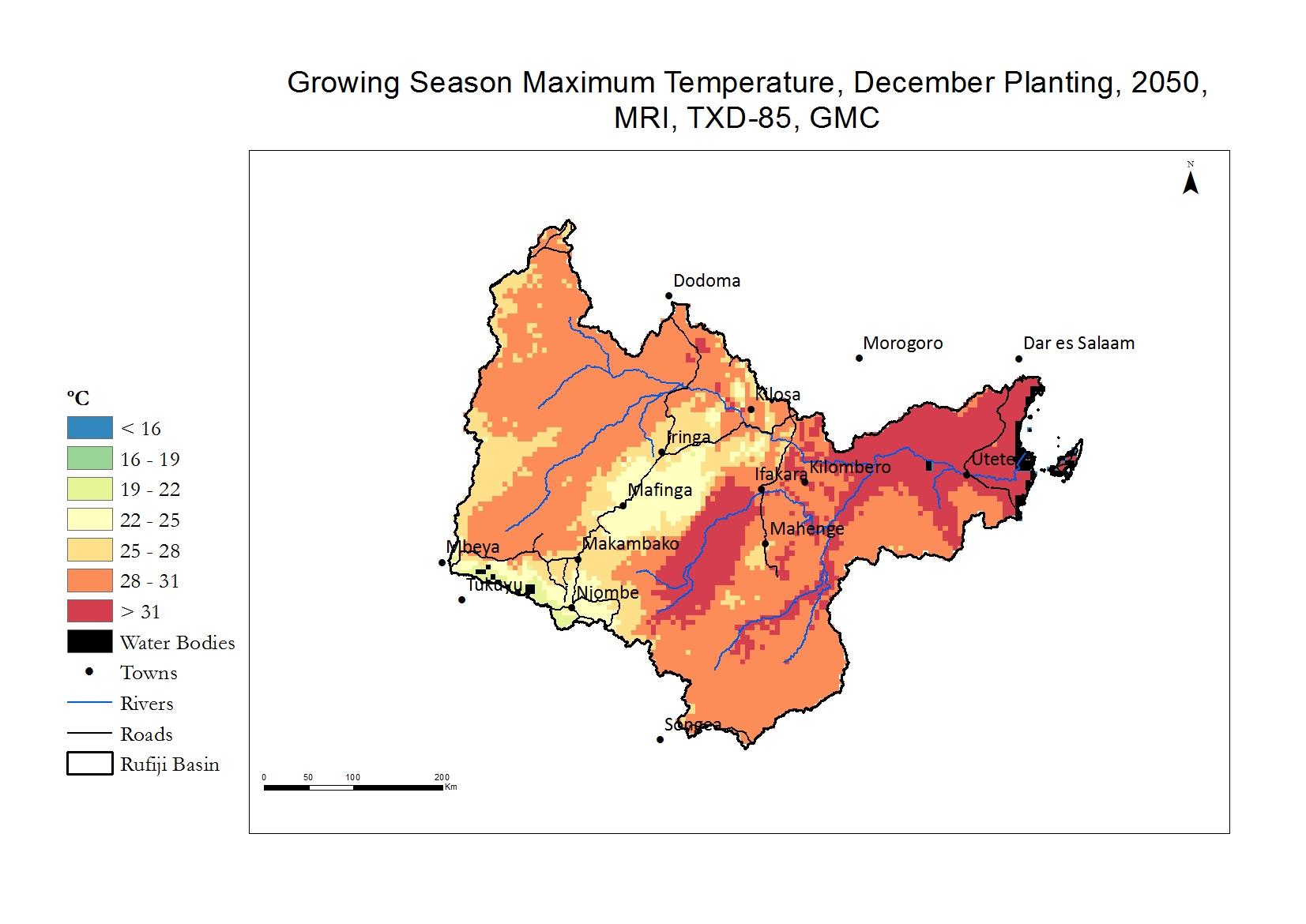
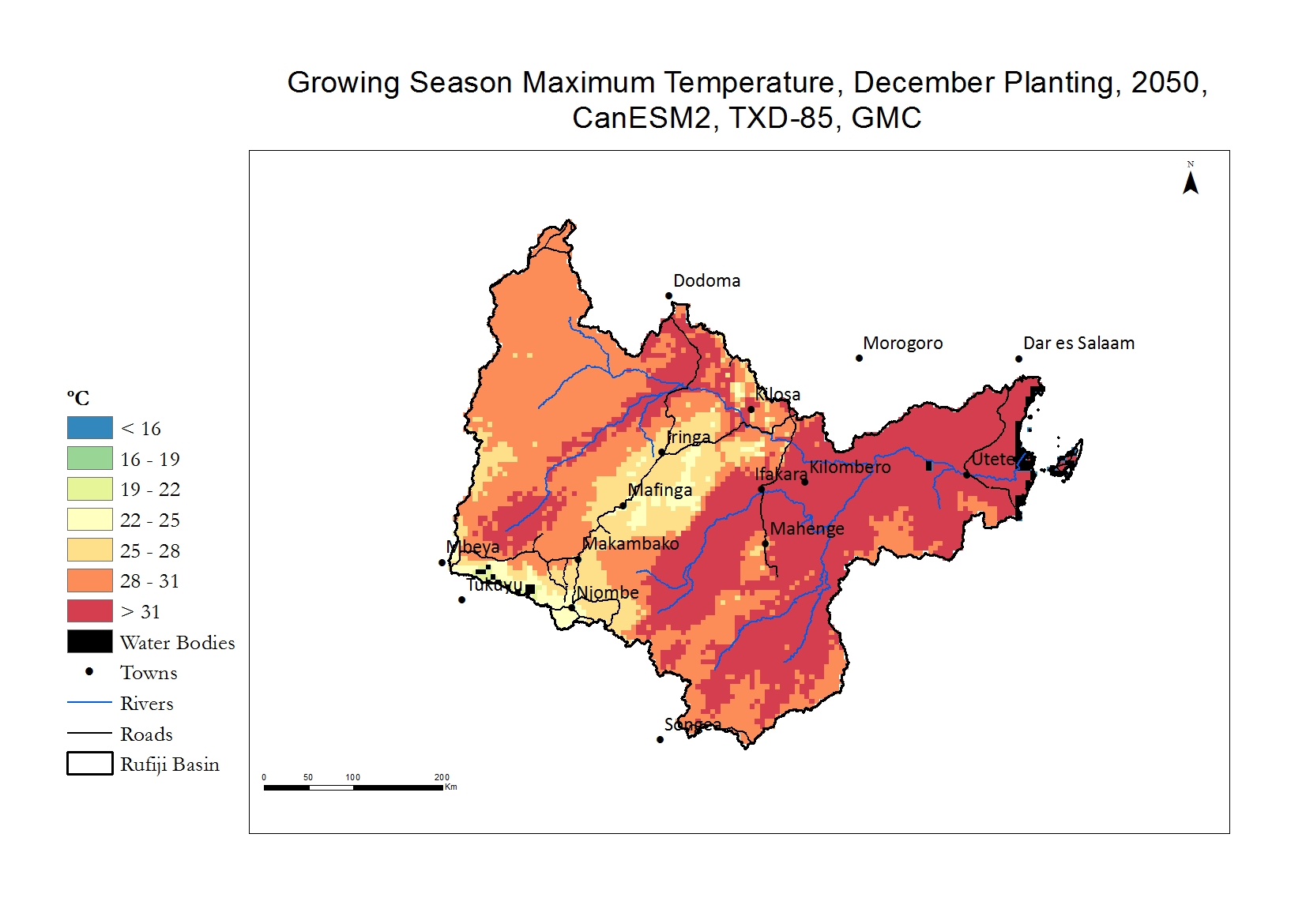
 Current
Current
